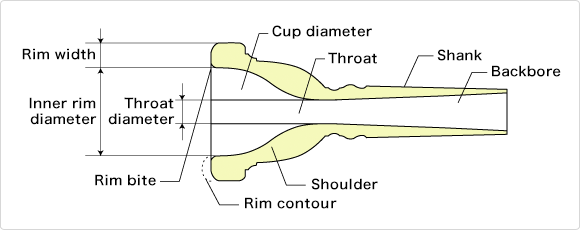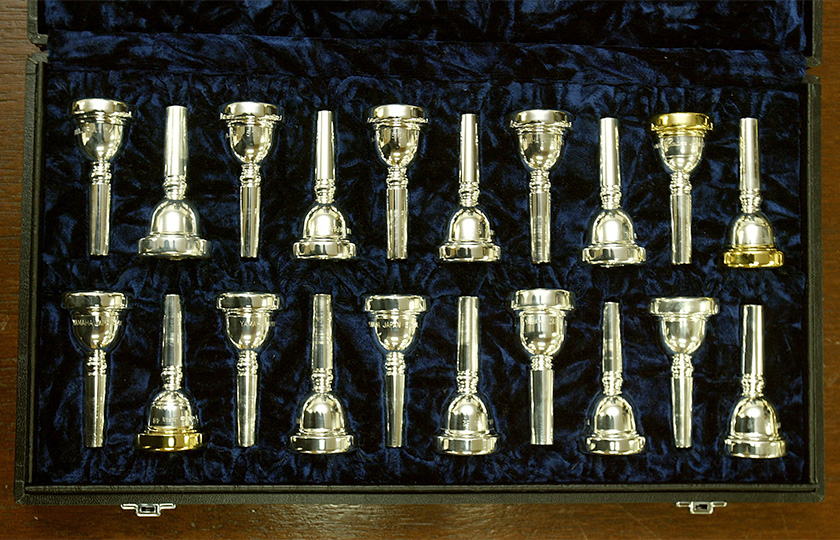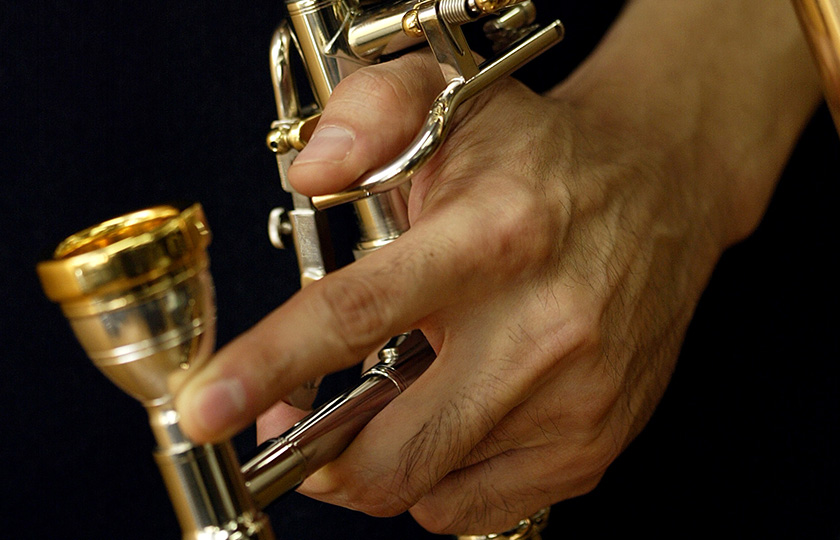The Structure of the Trombone
Try out a mouthpiece!
Sound is produced by buzzing the lips
Saxophones and clarinets utilize a small part called a reed that vibrates and produces noise. Trombones do not. Since they do not use reeds, when playing a trombone a player causes his or her lips to vibrate-basically acting as the instrument's reed. What this means is that the mouthpiece does not contain any vibrating parts.
Cross-sectional diagram of the mouthpiece

There are many kinds of mouthpieces
Lip size and shape vary from person to person. Furthermore, the shape of the mouthpiece can alter how the instrument sounds. A mouthpiece with a deep cup will provide a large and full sound, while a thin mouthpiece will provide a forceful and bright sound. Manufacturers therefore build a large variety of mouthpieces with slight differences in the diameter or the volume of the cup so that players can choose the sound they want for their instrument.

A set of mouthpieces of varying sizes
Your first mouthpiece!
First, imagine the feeling of holding a single piece of paper between your lips. You wouldn't need to use much strength. Lightly press the mouthpiece to your lips, so that 2/3rds of it is above your lips, and 1/3rd of it is below your lips. Then try making some noise.
If you loosen your lips and open them, you won't make any noise at all. Keep your lips somewhat tense and then vibrate them.

Position of mouthpiece and lips
Were you able to make any noise? Once you are able to do this, next try it with the mouthpiece attached to a trombone. Having practiced like this, you're sure to make some beautiful sounds!

Install the mouthpiece to a trombone
Musical Instrument Guide:Trombone Contents
Structure
How to Play
How the Instrument is Made
Choosing an Instrument
Care and Maintenance
Trivia
- God is in the trombone
- The trombone was a bit of a problem for cavalries...
- A trombone that would scare even a snake!
- Two instruments, both tenor, but quite different!
- A trombone player walks into pawnshop...
- You can trill just by moving your mouth
- It is possible to increase the pitch even as you extend the slide
- Famous pieces from trombone concertos
- Orchestra pieces in which the trombone plays an important role
- The Yamaha quartet
- For trombones, why does sheet music notation differ from the fundamental tone of the instrument?
- A bass trombone-with an F attachment only
